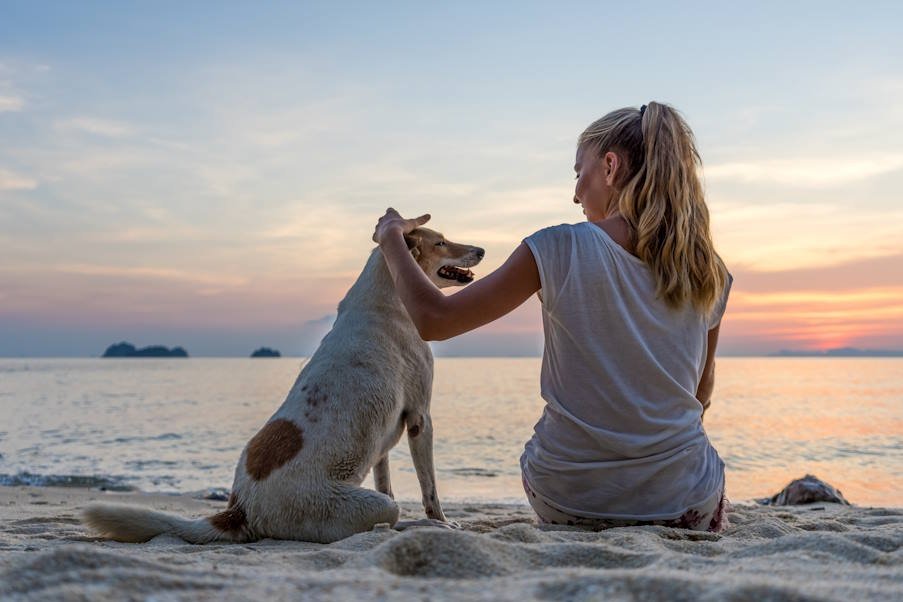It’s summer, you’re going on vacation and you’re probably taking your dog with you. If you haven’t done the experiment, maybe take him to the beach, to see how he relates to sea water. It is usually the same as (fresh) bath water. Keep that in mind and let’s move on.
If the dog does not want to go to sea, there is no reason to force him – you cannot “cut off” his career, if he has talent. In order to improve his general relationship with water, however, you can take advantage of his praise of medicines, worshiping him, with a calm and positive tone of your voice.
Advertising
Salt water and dogs: What is the right treatment
Now, when it comes to salt water, it helps to know how you can protect your animal while it makes its heroic path. It all depends on the coat – and sometimes the breed.
If your dog is a Labrador Retriever or Chesapeake Retriever or Portugal Water Dog or Irish Water Spaniel or some other breed that was bred to swim in salt water, this means that their coat is naturally oily. Thus, it resists the absorption of salt water.
What do you do when your best friend has a double coat? Double coat dogs have an outer coat and an undercoat. The outer coat consists of long hairs that protect against moisture and dirt. The substrate is thicker, more … cottony and acts as insulation, protecting against low and high temperatures. In this case, in addition to not being healthy (for him) to groom him, it is not good to leave salt water on him, because what is trapped between the hairs, irritates his skin and promotes growth of bacteria. Therefore, you should do what you would do yourself: bathe in clean, fresh water and a dry well.
Advertising
Now, if your dog has fine or silky hair, he is at risk of skin problems from exposure to salt water and the sun. Therefore, washing is also recommended in this case.
The sand
The biggest danger for dogs on the beach is sand. Accidentally or during play (he will really dig in search of coolness, there is sand that sticks to the ball you throw to him and his paws, which he licks) he can swallow. Small sand particles become heavy and form solid lumps when wet.
Therefore, they can block the intestinal tract. Which can lead to a serious condition called intestinal obstruction. The symptoms that will show you that you need to go to the vet are vomiting, dehydration, abdominal pain, swelling of the abdominal area, breathing and anxiety. If you have fresh water on hand and are careful that there is no accumulation of sand in his toys, there is no fear. Especially if you take a shower that we talked about when you leave the beach.
The hot sand
Just as your paws burn when you walk in the middle of the sun on the sand at the beach, so do your pet’s paws. Except they burn more easily. So for the sake of your animal, leave it in the accommodation during the hottest hours of the day.
The heat stroke
Since dogs don’t sweat like we do, their body temperature can get dangerously high on a sunny day at the beach. So it is better to leave our dog in a shady and cool place (with plenty of water), during the day and let’s go with him early in the morning or from the afternoon.
The sunburn
Some dogs are more prone to sunburn than others and this has to do with type (fine hair or even hairless) and coat color (white is more susceptible). It’s not a good idea to put your own sunscreen on it. However, there are special sunscreens for dogs!
The moss
Dried seaweed found on some beaches contains toxins. When they absorb water (into the stomach) they swell, which can cause an obstruction and require emergency surgery. So beware

